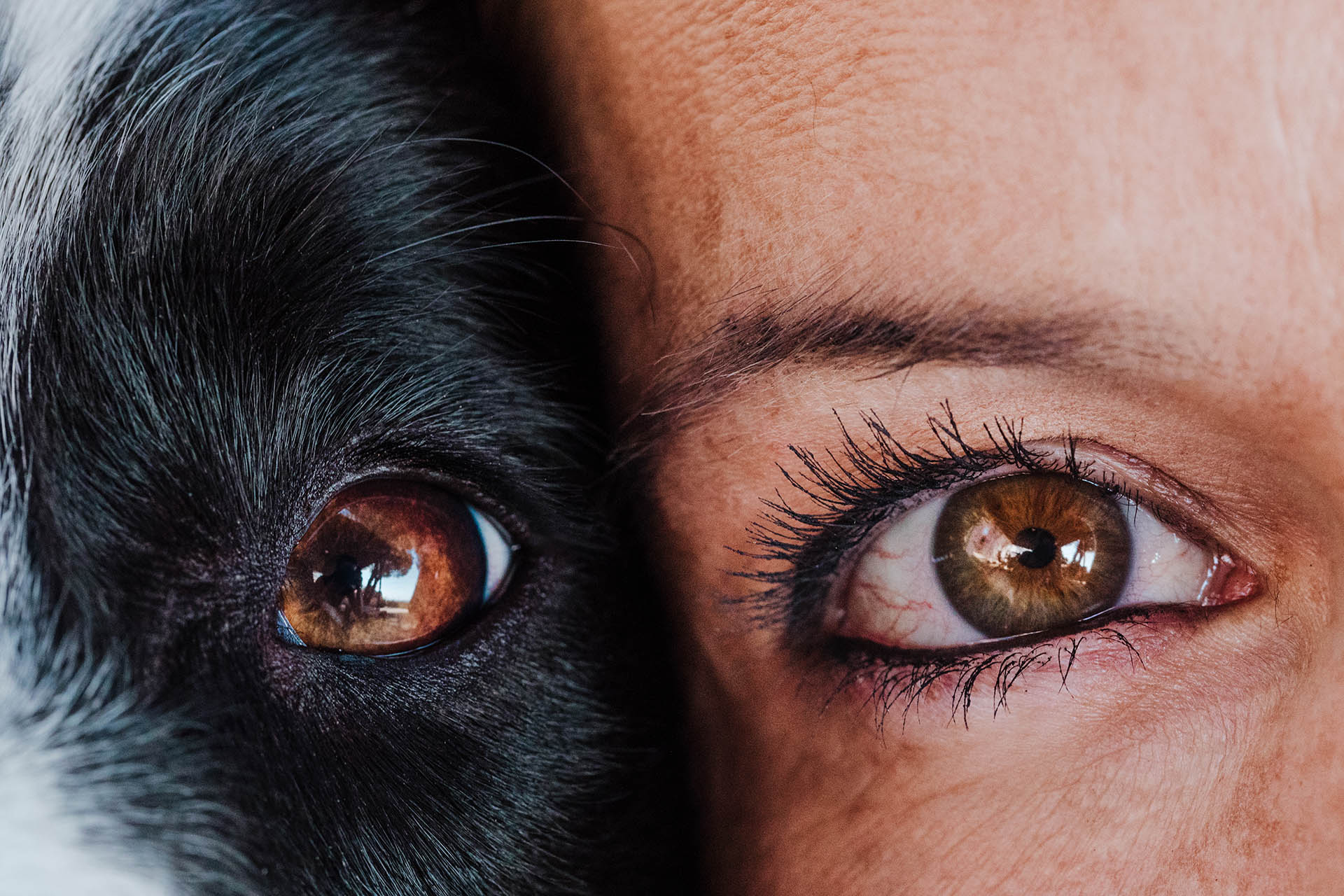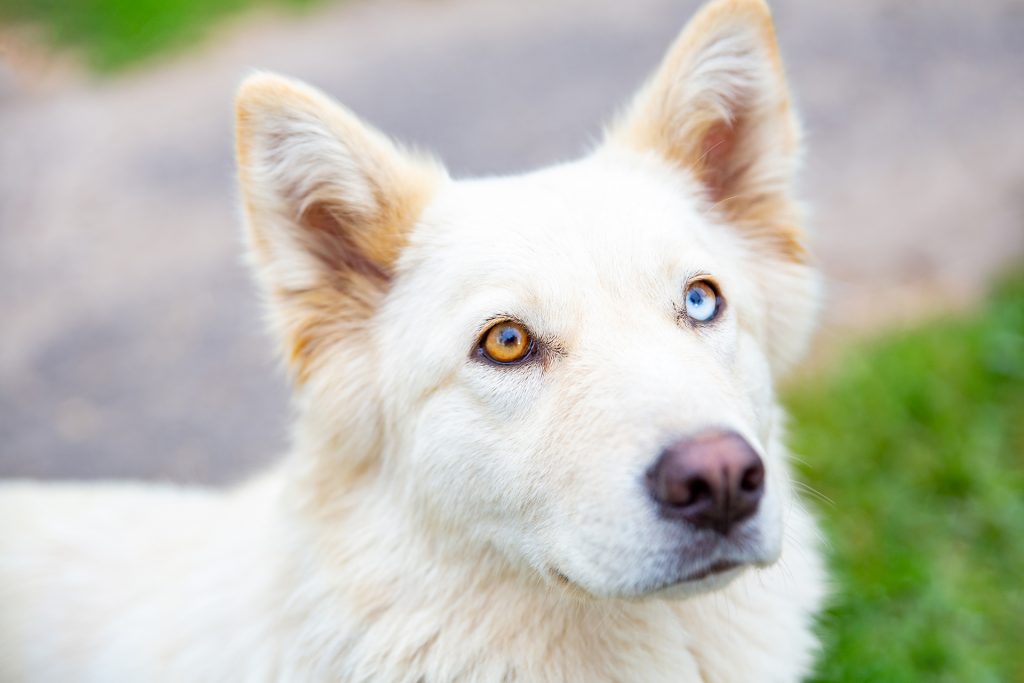When gazing into the eyes of a canine companion, one can’t help but be drawn into the depths of their soulful stares. The range of dog eye colors adds a unique character to each breed and individual dog, reflecting a fascinating genetic tapestry. From the common browns to the rare blues, the color of a dog’s eyes is more than just a cosmetic trait—it’s a glimpse into their genetic makeup and, sometimes, their health.
Understanding the Basics: Brown is the Norm
Brown eyes in dogs are not just common; they’re a fascinating showcase of genetics at work. This predominant eye color ranges from a light, honeyed amber to rich, velvety chocolate and even to a depth-miming black. The key player in this spectrum of shades is melanin, a natural pigment also found in human skin and eyes, which is responsible for coloration in various living organisms.
The Role of Melanin
Melanin is produced by cells called melanocytes, which are present in dogs’ iris. The type and amount of melanin these cells produce determine the eye color. Eumelanin, a type of melanin, is particularly responsible for darker shades, including brown and black. The more eumelanin present in the iris, the darker the eye color. This variance in melanin production is largely influenced by genetics, with specific genes dictating how much melanin the melanocytes should produce.
Genetic Influence
The genetics of eye color in dogs is complex, involving multiple genes that interact to determine the final shade of brown. These genes regulate melanin’s production, distribution, and concentration within the iris. Some breeds have been selectively bred for certain traits, including eye color, so some breeds tend to have a consistent eye color range. For example, Labrador Retrievers commonly have brown eyes, a trait that has been favored in breeding standards.
Why Brown Dominates
The dominance of brown eyes in dogs is tied to the evolutionary advantages of melanin. Beyond coloring, melanin is crucial in protecting tissues from sunlight damage. In the wild, darker eye colors could have offered ancestral dogs advantages in sunny environments by reducing glare and increasing the ability to discern shapes and movement in bright light. This might explain why brown, being rich in melanin, is the most common eye color.
Variability and Adaptation
The variability in brown shades among dogs is not just a matter of genetics but also an adaptation to various environments. Lighter amber eyes might be more common in breeds from cloudy, less sunny regions, while darker eyes prevail in those from brighter, open environments. This adaptability highlights the dynamic interplay between genetics and the environment in shaping the physical traits of dogs over generations.
A Spectrum of Beauty
The spectrum of brown eye colors in dogs is a testament to the beauty of genetic diversity. From the warm coppers of a Vizsla to the almost mystical dark browns of a Doberman, each shade of brown carries a genetic story. This diversity adds to the visual appeal of different breeds and reflects the intricate genetic mechanisms that govern the traits we see in our canine companions.
The Rarity of Blue Eyes
Blue eyes in dogs are a rare and captivating feature, often resulting from a lack of pigment in the iris. This can be a hereditary trait passed down through specific breeds, such as Siberian Huskies or Australian Shepherds, or it may occur sporadically in breeds where blue eyes are not the norm. The genetic mutation affecting the pigment melanin can result in one or both eyes being blue, leading to heterochromia in some cases—a condition where each eye is a different color.
Heterochromia: A Unique Phenomenon
Heterochromia is not just a fascinating genetic anomaly; it’s a statement of uniqueness among dogs. It can occur in two forms: complete, where each eye is a different color, and sectoral, where part of one eye has a different color than the other. This condition is often seen in breeds like the Australian Shepherd, Huskies, and even mixed breeds, showcasing the beauty of genetic diversity.
The Influence of Coat Color
Interestingly, a dog’s coat color can influence their eye color. Breeds with merle or piebald patterns, where patches of color are interspersed with white, often have blue or odd-colored eyes due to the genetic variations affecting both coat and eye color. This correlation adds another layer of complexity to the genetics of eye color in dogs.
Health Implications of Eye Color
While most variations in eye color are harmless, certain changes can indicate health issues. For instance, a sudden change in eye color could signal diseases such as cataracts or glaucoma. Breeds with blue eyes are more susceptible to specific health conditions, including deafness and eye disorders. Regular veterinary check-ups are crucial for early detection and management of these conditions.
A Reflection of Diversity
The spectrum of eye colors in dogs is a testament to their genetic diversity and the intricate relationships between genetics, health, and physical appearance. Whether gazing into the deep browns of a Labrador Retriever or the striking blues of a Husky, each dog’s eyes tell a story of their heritage and individuality.
Eye color in dogs is more than just an aesthetic feature; it’s a fascinating aspect of their biology that captivates the interest of dog lovers and researchers alike. As we continue to explore and understand the genetics behind these colors, we deepen our appreciation for the diversity and beauty of our canine companions.



